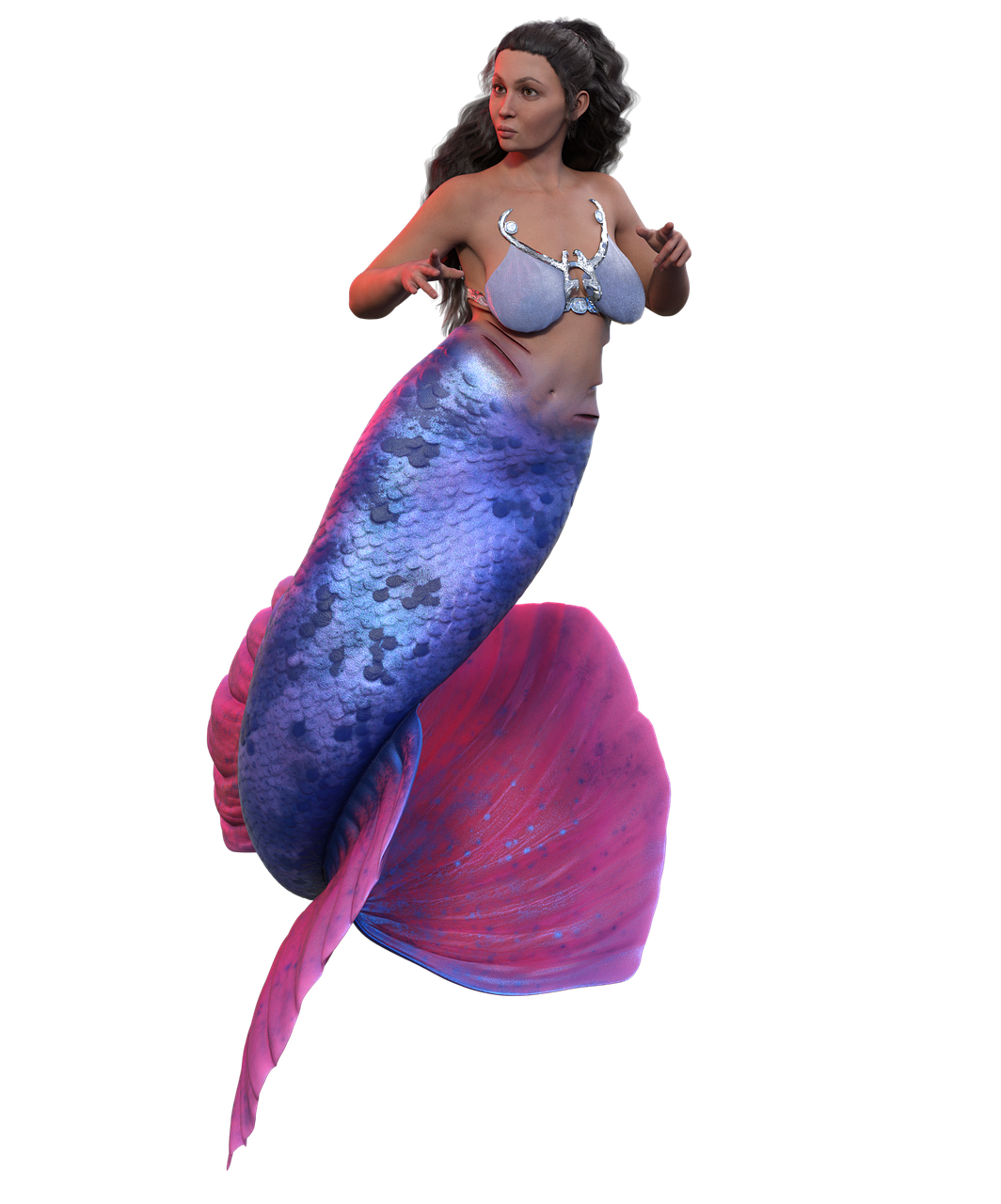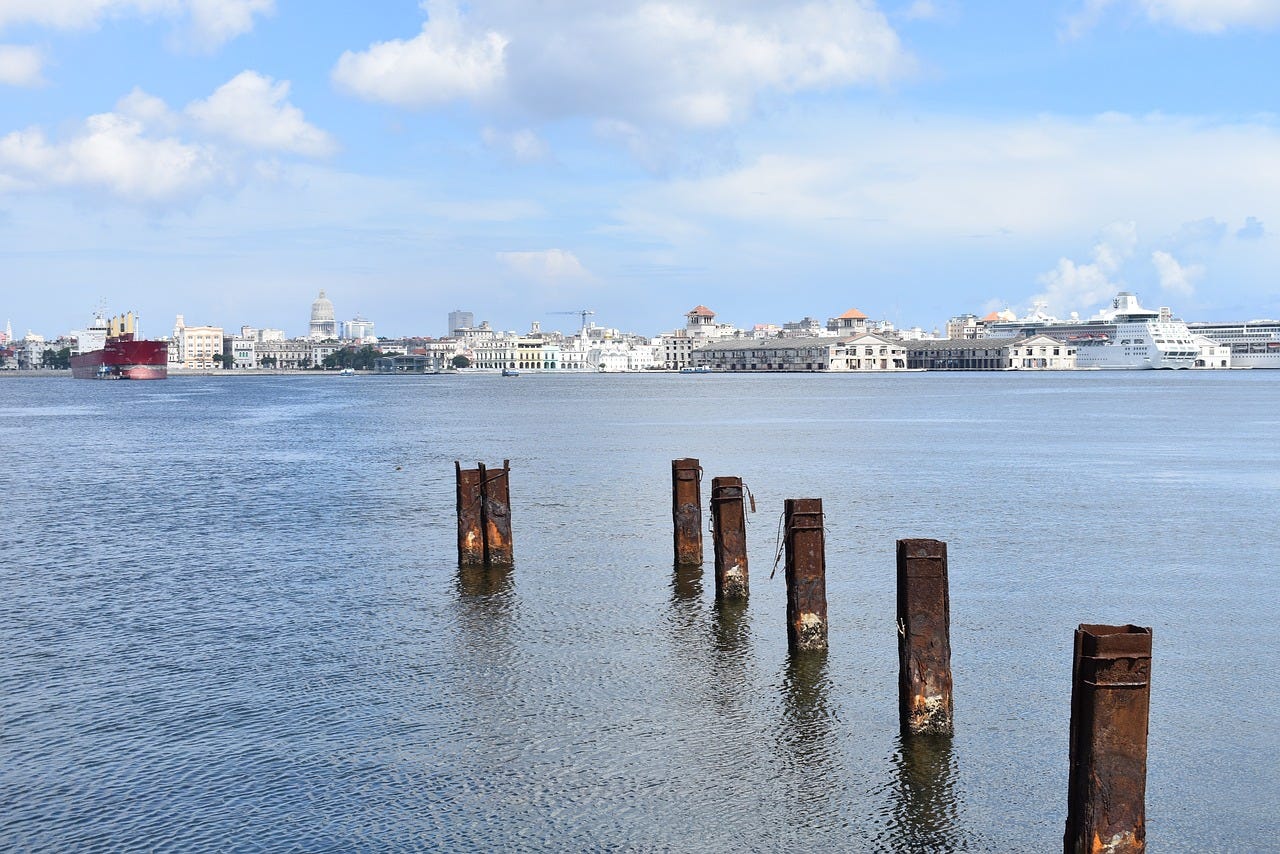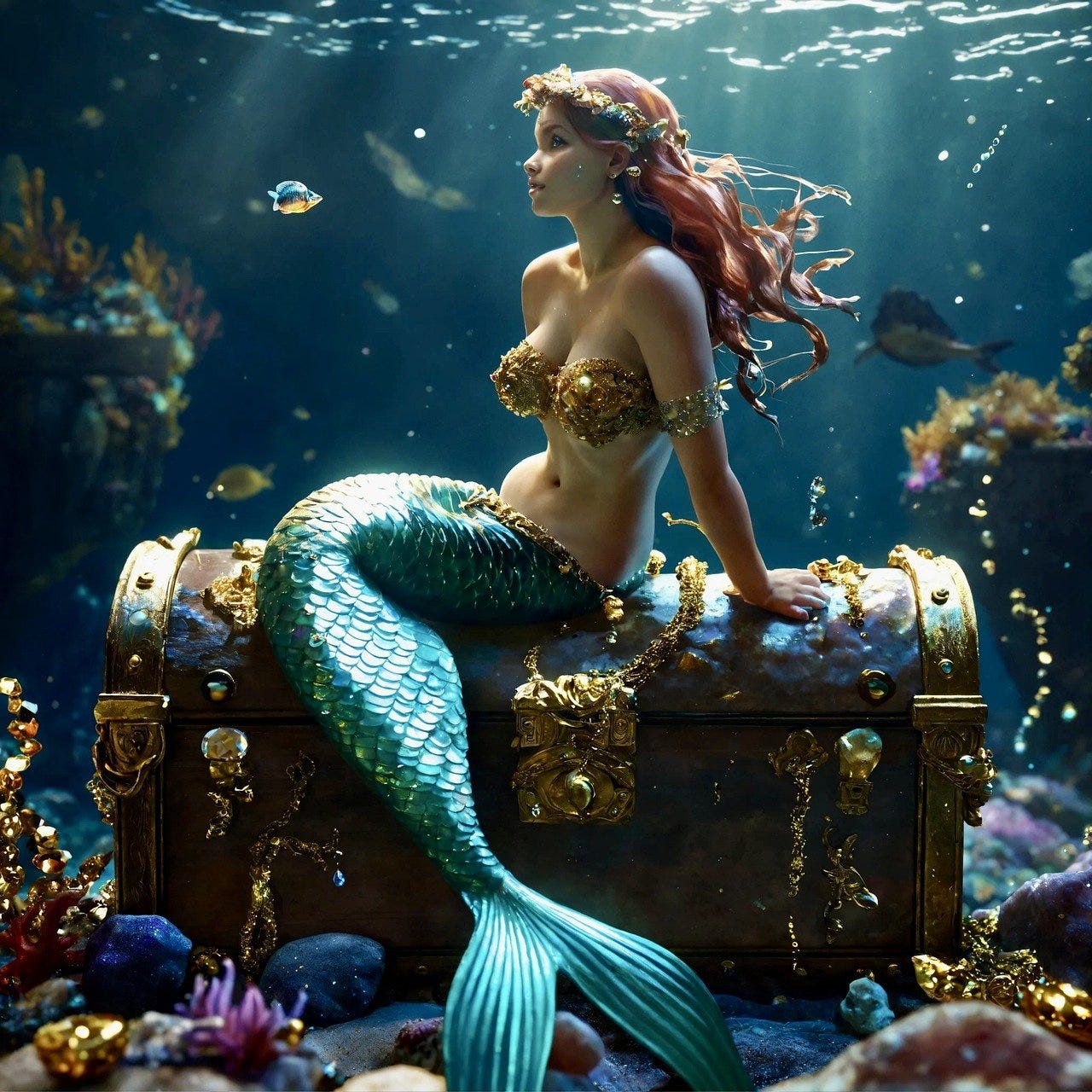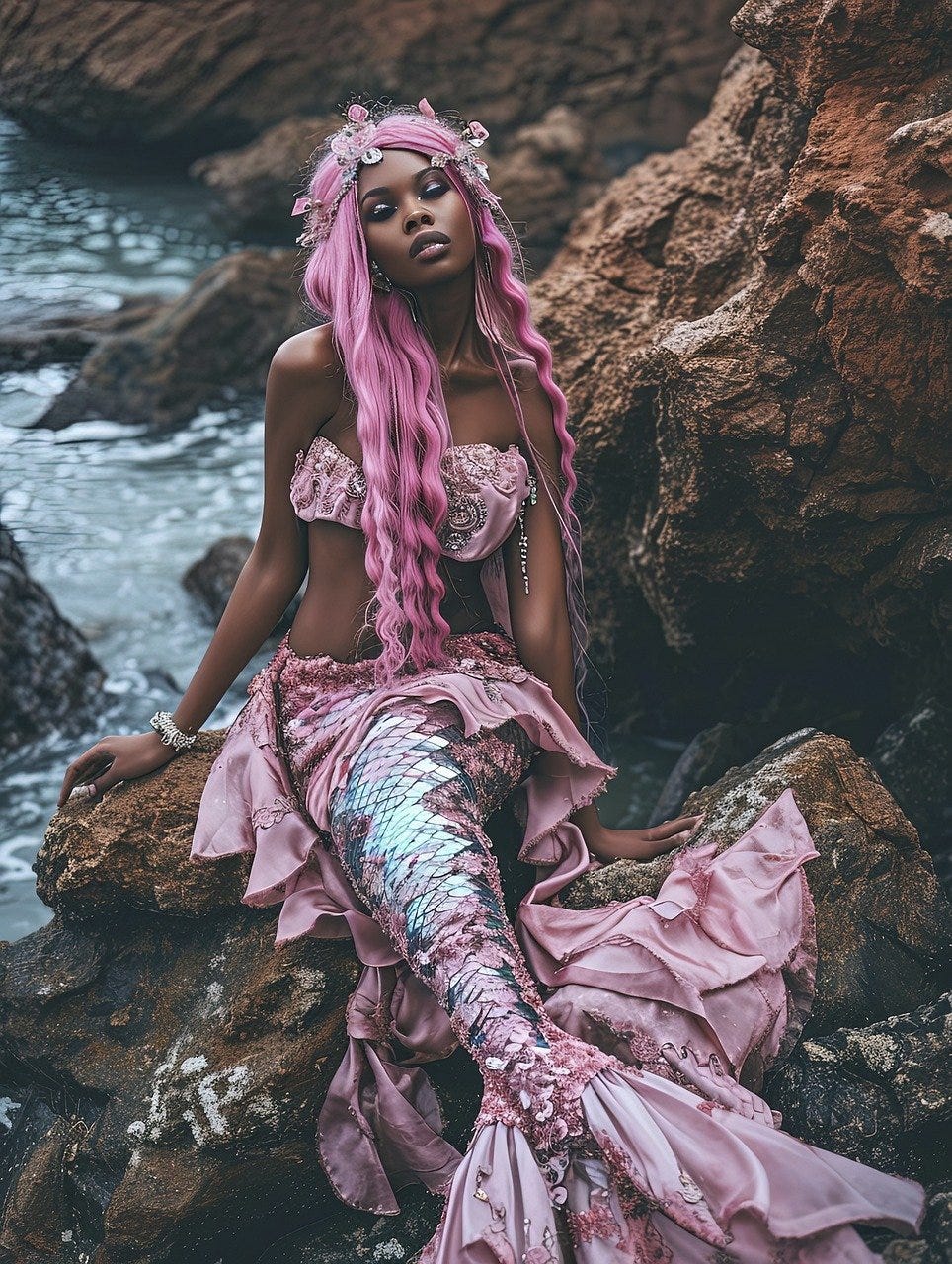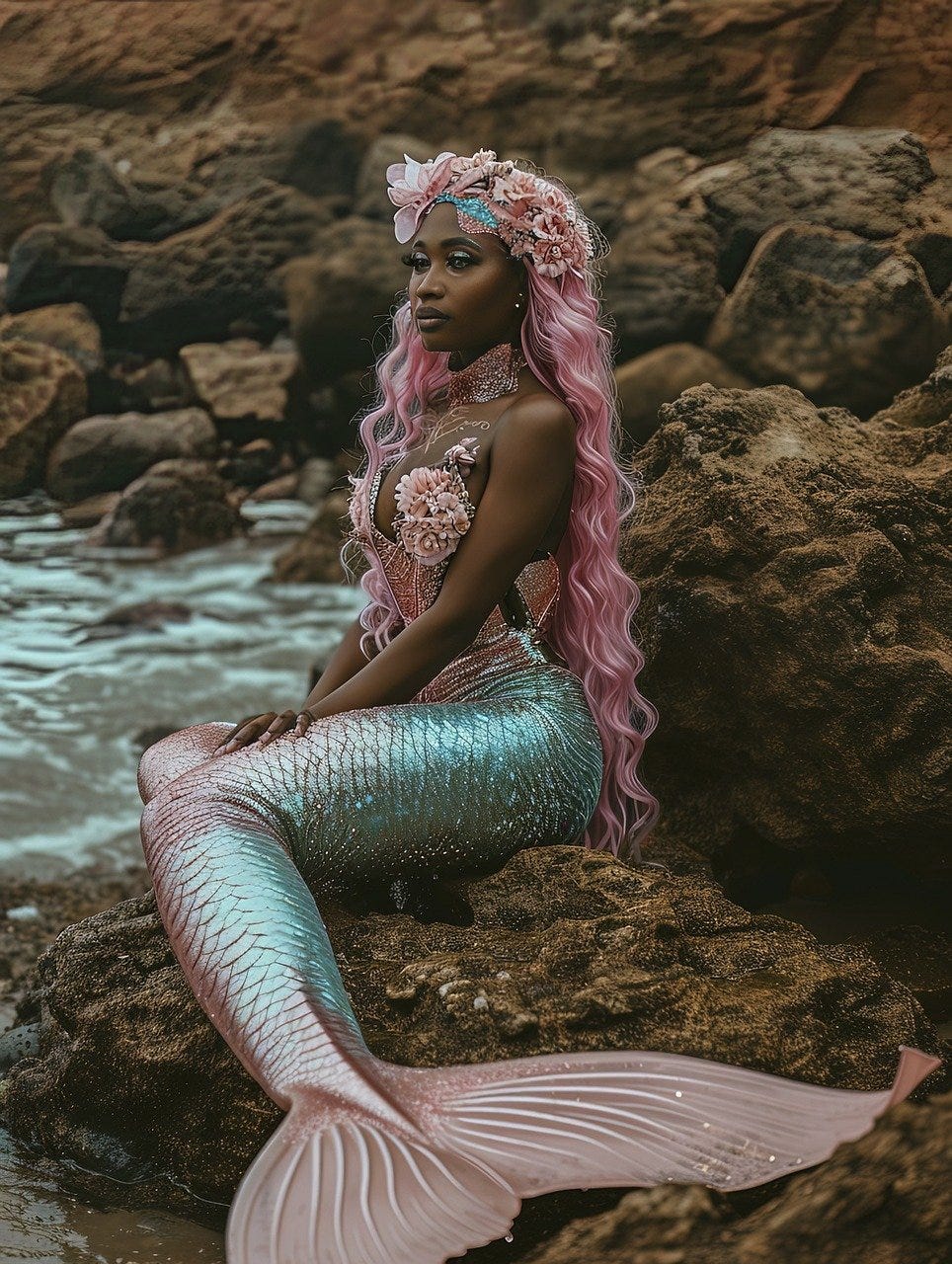In Greek and Roman mythology, the prominent deity of the sea is Poseidon and Neptune but in West Africa and the African diaspora, this prominent deity is called Yemoja. In Greco-Roman mythology the most important sea god was male but in West African mythology the deity was female. Yemoja is the giver of life and the metaphysical mother of all orishas ( Canson 2014). Yemoja. / Yemayá is the orisha/deity/goddess of motherhood and the sea because she is the deity of motherhood, she is associated with the moon, and she is the patron of women. (. New York Latin Culture September 2022). Yemoja is the eldest child of Olodumere the supreme and creator god. In some myths, Yemayá married her brother, Aganyu and they had a son together, whom they named Orungan (Rhys 2021). In other myths, she is said to be the biological mother of Ogun, Sango, Oya, Osun, Oba, Orisha Oko, Babaluaiye, and Osoosi. Still, in others, she is believed not to have given birth to any children although she has nursed many ( Canson 2014). Yemoja’s origins are varied among her worshippers around the world, especially in the US, Cuba, Haiti, and Brazil ( Snider 2019).
Yemoja like many women especially those of us who have given birth to children and have nursed babies is self-conscious about her body. She is said to have large breasts because she had nursed many children. She is embarrassed about the size of her breasts and is very sensitive about them. In response to the other orisha/gods insulting her about her breasts, she turns herself into a river (Canson 2014). This demonstrates that Yemoja who is a mermaid figure is not the seductress like many mermaids of other folklore and mythology and she is illustrated as being like many human mothers self-conscious of their bodies after birth and after breastfeeding. As a result, many nursing mothers can take heart and be proud that there is a female goddess who understands their plight.
Greek and Roman societies were patriarchal, and women did not have many rights, thus their predominant gods of the sea were male. However, Africa specifically West Africa might have been more matriarchal thus Yemoja being the orisha/ goddess of the sea. If Yemoja is the giver of life and coastal cities, communities, and villages are fed by the way of the sea, then the sea is also the giver of life. Therefore if women are the ones that birth life and the sea feeds communities, it makes sense that the deity of the sea is a female. According to Elizabeth Perez “Yemayá has been approached as both the prototype for and the deified paragon of maternal love” (Perez 2013). Her duties as the orisha of the sea and of motherhood are connected. Women are often the givers of life in birthing children and the sea is also the giver of life with the abundance and births of fish and other forms of sea creatures. Yemayá in these roles has birth rivers, seas, and life. In one myth Yemayá's water broke over the primordial earth giving birth to the seas, rivers, and everything associated with life (New York Latin Culture September 2022).
Yemoja is a major water spirit in the Yoruba religion (Adeoye. (1989). The Yoruba people are one of the three largest ethnic groups in Nigeria. There are small communities in Benin and Togo. (Britannica, The Editors of Encyclopaedia 2022). She is often depicted as a mermaid. Mermaids are not only mythical creatures of Europe but mermaids and mermaids-like water spirits myths have been found all over the world, consequently, it is not a surprise that mermaid myths would be found in West Africa and not unexpected that Yemoja would be depicted as a mermaid.
But how did this mermaid deity come from West Africa to the Caribbean and other parts of the Americas?
In Santeria, an Afro-Cuban and Afro-Caribbean religion Yemayá is portrayed as a queenly mermaid. Originally in Yorubaland Yemoja was a river orisha and had nothing to do with the ocean but when the enslaved Africans boarded the ships, she went with them because she didn’t want to leave them and over became an orisha of the ocean ( Rhys 2021).
With roots in the Yoruba religion in West Africa, Yemayá was brought to the Americas by enslaved Africans as early as the 16th century (Snider 2019). Because of slavery, Yemayá spread beyond the borders of West Africa and is worshipped in the Americas notably in Cuba and Brazil. Yemayá is the Spanish name for Yemoja ( Rhys 2021). Statues of Yemoja have increased in the Caribbean and other parts of the Caribbean because of slavery. The enslaved Africans during the Middle Passage appealed to Yemoja to relieve their suffering. It is believed that Yemoja’s omnipresence that surrounds the Caribbean islands and the coastlines of Trinidad, Cuba, and Brazil is a reminder of nurturing and bringing hope. There have been attempts to destroy the African traditional cultural practices but these were resisted by the formation of ethnic social organizations in Brazil and Cuba and the masking of the orisha as Roman Catholic saints ( Canson 2014). She is syncretized as the Virgin Mary ( New York Latin Culture September 2022).
Symbols and Symbolization of Yemoja
Yemoja symbols include the number seven ( for the seven seas), and the peacock ( like the Greek goddess Hera). Fish, fishnets, seashells, and sea stones are also symbols associated with her. Yemoja’s favorite colors are blue and white as they represent the sea. As conveyed earlier, she is described as a regal mermaid or a young woman wearing seven skirts representing the seven seas. She typically wears corals, crystals, pearls, or tiny bells in her hair, body, or clothes (Rhys 2021).
We are told of Greek, Roman, Egyptian, and to a lesser extent, Norse goddesses like Hera, Juno, Amphitrite, and Freya but many do not know about West African, Afro-Caribbean, and Afro-Latin goddesses and other female deities. Yemoja is one of the most important of these deities and although colonization and imperialism tried to annihilate and destroy Yemoja and the orishas, she and they live on. This demonstrates the resilience of the African diaspora in the Americas and of Yemoja herself, in that although we know more about European and Mediterranean female deities, there is a world out there filled with African, Caribbean, and, other deities waiting to be worshipped and acknowledged.
So instead of worshipping Hera or Juno or the Virgin Mary, we can reclaim our Yemoja, mother of the seas, the mother of living things, the nursing goddess, the mother goddess, the orisha. Yemoja is waiting to be reclaimed!
It is also worth to note that September 7th is her feast day in Cuba
References
Adeoye, C. L. (1989). Ìgbàgbọ́ àti ẹ̀sìn Yorùba (in Yoruba). Ibadan: Evans Bros. Nigeria Publishers.
Britannica, The Editors of Encyclopaedia. "Yoruba". Encyclopedia Britannica, 20 Dec. 2022,
Canson, Patricia E. "Yemonja". Encyclopedia Britannica, 15 Aug. 2014.
Celebrate Yemayá, Mother Orisha of the Sea: New York Latin Culture September 2021, https://www.newyorklatinculture.com/yemaya-mother-orisha-of-the-sea/
Pérez, Elizabeth. "Nobody’s mammy: Yemayá as fierce foremother in Afro-Cuban religions." Yemoja: Gender, sexuality, and creativity in the Latina/o and Afro-Atlantic diasporas (2013): 9-42.
Rhys, Dani. “ Yemayá: Yoruba Queen of the Sea” Symbol Sage 2021 https://symbolsage.com/yemaya-queen-of-the-sea/
Snider, Amber C. “ The History of Yemayá Santeria’s Queenly Ocean Goddess Mermaid”, Teen Vogue July 2019 https://www.teenvogue.com/story/the-history-of-yemaya-goddess-mermaid
All Images are from Pixabay




